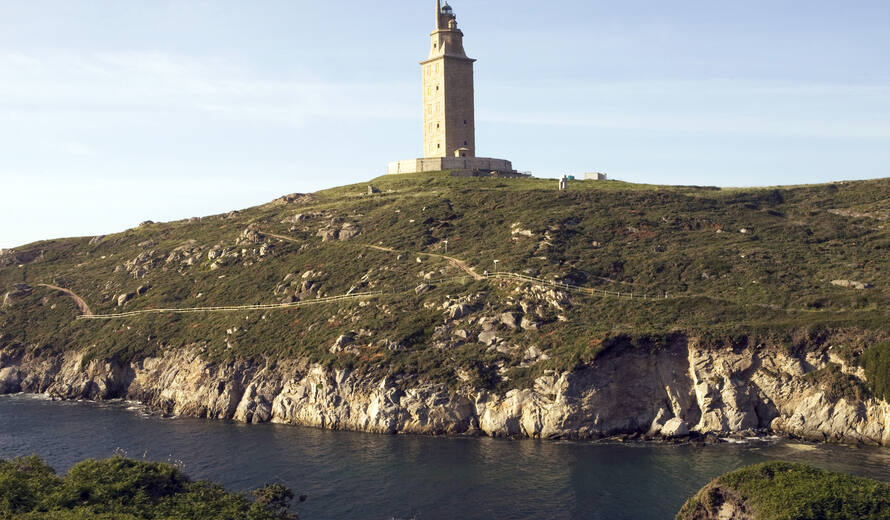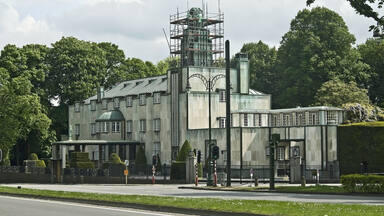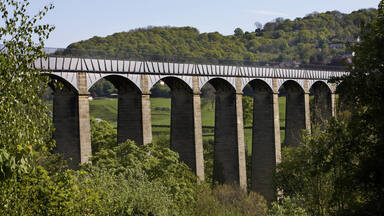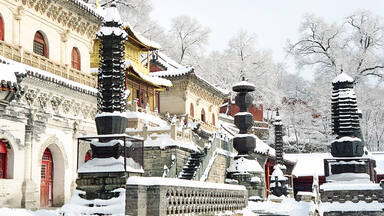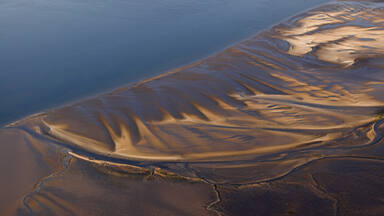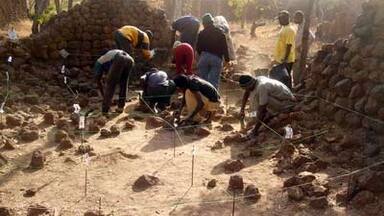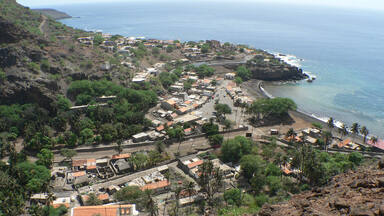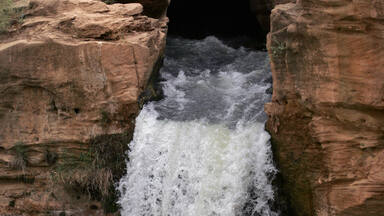13 new sites have been added to UNESCO’s World Heritage List which lost one site while three were placed on the Danger List
The World Heritage Committee holding its 33rd session chaired by María Jesús San Segundo, the Ambassador and Permanent Delegate of Spain to UNESCO, has inscribed two new natural sites and 11 cultural sites on UNESCO’s World Heritage List. Since it also withdrew one site - from the List, Dresden Elbe Valley (Germany), the List now numbers a total of 890 properties.
The Committee also inscribed three sites on UNESCO’s List of World Heritage in Danger to help raise international support for their preservation. One site was removed from the Danger List. More sites may be inscribed on the Danger List as the Committee continues examining state of conservation reports on Tuesday.
During the session, which is scheduled to end on 30 June, three countries had their first World Heritage sites inscribed on UNESCO’s List of properties recognized as having outstanding universal value. They are, Burkina Faso, Cape Verde and Kyrgyzstan.
Natural sites inscribed on UNESCO’s World Heritage List:
The Wadden Sea (Germany / The Netherlands) comprises the Dutch Wadden Sea Conservation Area and the German Wadden Sea National Parks of Lower Saxony and Schleswig-Holstein. It is a large temperate, relatively flat coastal wetland environment, formed by the intricate interactions between physical and biological factors that have given rise to a multitude of transitional habitats with tidal channels, sandy shoals, sea-grass meadows, mussel beds, sandbars, mudflats, salt marshes, estuaries, beaches and dunes. The inscribed site represents over 66% of the whole Wadden Sea and is home to numerous plant and animal species, including marine mammals such as the harbour seal, grey seal and harbour porpoise. It is also a breeding and wintering area for up to 12 millions birds per annum and it supports more than 10 percent of 29 species. The site is one of the last remaining natural, large-scale, intertidal ecosystems where natural processes continue to function largely undisturbed.
The Dolomites (Italy) comprise a mountain range in the northern Italian Alps, numbering 18 peaks which rise to above 3,000 metres and cover 141,903 ha. It features some of the most beautiful mountain landscapes anywhere, with vertical walls, sheer cliffs and a high density of narrow, deep and long valleys. A serial property of nine areas that present a diversity of spectacular landscapes of international significance for geomorphology marked by steeples, pinnacles and rock walls, the site also contains glacial landforms and karst systems. It is characterized by dynamic processes with frequent landslides, floods and avalanches. The property also features one of the best examples of the preservation of Mesozoic carbonate platform systems, with fossil records.
Cultural sites inscribed on UNESCO’s World Heritage List:
Stoclet House (Belgium). When banker and art collector Adolphe Stoclet commissioned this house from one of the leading architects of the Vienna Secession movement, Josef Hoffmann, in 1905, he imposed neither aesthetic nor financial restrictions on the project. The house and garden were completed in 1911 and their austere geometry marked a turning point in Art Nouveau, foreshadowing Art Deco and the Modern Movement in architecture. Stoclet House is one of the most accomplished and homogenous buildings of the Vienna Secession, and features works by Koloman Moser and Gustav Klimt, embodying the aspiration of creating a ‘total work of art’ (Gesamtkunstwerk). Bearing testimony to artistic renewal in European architecture, the house retains a high level of integrity, both externally and internally as it retains most of its original fixtures and furnishings.
The Ruins of Loropéni (Burkina Faso). The 11,130m2 property, the first to be inscribed in the country, with its imposing stone walls is the best preserved of ten fortresses in the Lobi area and is part of a larger group of 100 stone enclosures that bear testimony to the power of the trans-Saharan gold trade. Situated near the borders of Côte d’Ivoire, Ghana and Togo, the ruins have recently been shown to be at least 1,000 years old. The settlement was occupied by the Lohron or Koulango peoples, who controlled the extraction and transformation of gold in the region when it reached its apogee from the 14th to the 17th century. Much mystery surrounds this site large parts of which have yet to be excavated. The settlement seems to have been abandoned during some periods during its long history. The property which was finally deserted in the early 19th century is expected to yield much more information.
Cidade Velha, Historic Centre of Ribeira Grande (Cape Verde). The town of Ribeira Grande, renamed Cidade Velha in the late 18th century, was the first European colonial outpost in the tropics. Located in the south of the island of Santiago, the town features some of the original street layout impressive remains including two churches, a royal fortress and Pillory Square with its ornate 16th-century marble pillar.
Mount Wutai (China). With its five flat peaks, Mount Wutai is a sacred Buddhist mountain. The cultural landscape numbers 53 monasteries and includes the East Main Hall of Foguang Temple, the highest surviving timber Building of the Tang Dynasty with life size clay sculptures. It also features the Ming Dynasty Shuxiang Temple with a huge complex of 500 statues representing Buddhist stories woven into three dimensional pictures of mountains and water. Overall, the buildings on the site present a catalogue of the way Buddhist architecture developed and influenced palace building in China over more than one millennium. Mount Wutai, literally, the five terrace mountain, is the highest mountain in northern China and is remarkable for its morphology characterized by precipitous sides with five open treeless peaks. Temples have been built on the site since the 1st century AD to the early 20th century.
Shushtar, Historical Hydraulic System (Iran), a masterpiece of creative genius, can be traced back to Darius the Great in the 5th century B.C. It involved the creation of two main diversion canals on the river Kârun one of which, Gargar canal, is still in use providing water to the city of Shushtar via a series of tunnels that supply water to mills. It forms a spectacular cliff from which water cascades into a downstream basin. It then enters the plain situated south of the city where it has enabled the planting of orchards and farming over an area of 40,000 ha. known as Mianâb (Paradise). The property has an ensemble of remarkable sites including the Salâsel Castel, the operation centre of the entire hydraulic system, the tower where the water level is measured, damns, bridges, basins and mills. It bears witness to the know-how of the Elamites and Mesopotamians as well as more recent Nabatean expertise and Roman building influence.
Sulamain-Too Sacred Mountain (Kyrgyzstan) dominates the Fergana Valley and forms the backdrop to the city of Osh, at the crossroads of important routes on the Central Asian Silk Roads. For more than one and a half millennia, Sulamain was a beacon for travellers revered as a sacred mountain. Its five peaks and slopes contain numerous ancient places of worship and caves with petroglyphs as well as two largely reconstructed 16th-century mosques. One hundred and one sites with petroglyphs representing humans and animals as well as geometrical forms have been indexed in the property so far. The site numbers 17 places of worship, which are still in use, and many that are not. Dispersed around the mountain peaks they are connected by footpaths. The cult sites are believed to provide cures for barrenness, headaches, and back pain and give the blessing of longevity. Veneration for the mountain blends pre-Islamic and Islamic beliefs. The site is believed to represent the most complete example of a sacred mountain anywhere in Central Asia, worshipped over several millennia.
The Sacred City of Caral-Supe (Peru). The 5000-year-old 626-hectare archaeological site of The Sacred City of Caral-Supe is situated on a dry desert terrace overlooking the green valley of the Supe river. It dates back to the Late Archaic Period of the Central Andes and is the oldest centre of civilization in the Americas. Exceptionally well-preserved, the site is impressive in terms of its design and the complexity of its architectural, especially its monumental stone and earthen platform mounts and sunken circular courts. One of 18 urban settlements situated in the same area, Caral features complex and monumental architecture, including six large pyramidal structures. A quipu (the knot system used in Andean civilizations to record information) found on the site testifies to the development and complexity of Caral society. The city’s plan and some of its components, including pyramidal structures and residence of the elite, show clear evidence of ceremonial functions, signifying a powerful religious ideology.
The Royal Tombs of the Joseon Dynasty (Republic of Korea) form a collection of 40 tombs scattered over 18 locations. Built over five centuries, from 1408 to 1966, the tombs honoured the memory of ancestors, showed respect for their achievements, asserted royal authority, protected ancestral spirits from evil and provided protection from vandalism. Spots of outstanding natural beauty were chosen for the tombs which typically have their back protected by a hill as they face south toward water and, ideally, layers of mountain ridges in the distance. Alongside the burial area, the royal tombs feature a ceremonial area and an entrance. In addition to the burial mounds, associated buildings that are an integral part of the tombs include a T-shaped wooden shrine, a shed for stele, a royal kitchen and a guards’ house, a red-spiked gate and the tomb keeper’s house. The grounds are adorned on the outside with a range of stone objects including figures of people and animals. The inscription of the Joseon Tombs completes the two earlier series of Korean Peninsula royal tombs inscribed on UNESCO’s World Heritage List: the Gyeongju Historic Areas, Republic of Korea, and Complex of Koguryo Tombs, Democratic People’s Republic of Korea.
The Tower of Hercules (Spain) has served as a lighthouse and landmark at the entrance of La Coruña harbour in north-western Spain since the late 1st century A.D. when the Romans built the Farum Brigantium. The Tower, built on a 57-metre-high rock, rises a further 55 meters. It is divided into three progressively smaller levels, the first of which corresponds to the Roman structure of the lighthouse. Immediately adjacent to the base of the Tower, is a small rectangular Roman building. The site also features a sculpture park, the Monte dos Bicos rock carvings from the Iron Age and a Muslim cemetery. The Roman foundations of the building were revealed in excavations conducted in the 1990s. Many legends from the Middle Ages to the 19th century surround the Tower of Hercules which is unique as it is the only lighthouse of Greco-Roman antiquity to have retained a measure of structural integrity and functional continuity.
The site of La Chaux-de-Fonds / Le Locle watchmaking town-planning consists of two towns situated close to one another in a remote environment in the Swiss Jura mountains, on land ill-suited to farming. Their planning and buildings reflect watchmakers' need of rational organization. Planned in the early 19th century, after extensive fires, the towns owed their existence to this single industry. Their layout along an open-ended scheme of parallel strips on which residential housing and workshops are intermingled reflects the needs of the local watchmaking culture that dates to the 17th century and is still alive today. The site presents outstanding examples of mono-industrial manufacturing-towns which are well preserved and still active. The urban planning of both towns has accommodated the transition from the artisanal production of a cottage industry to the more concentrated factory production of the late 19th and 20th centuries. The town of La Chaux-de-Fonds was described by Karl Marx as a "huge factory-town" in Das Kapital where he analyzed the division of labour in the watchmaking industry of the Jura.
Pontcysyllte Aqueduct and Canal (United Kingdom). Situated in north-eastern Wales, the 18-kilometre long Pontcysyllte Canal is a feat of civil engineering of the Industrial Revolution, completed in the early years of the 19th century. Covering a difficult geographical setting, the building of the canal required substantial, bold civil engineering solutions, especially as it was built without using locks. The aqueduct is a pioneering masterpiece of engineering and monumental metal architecture, conceived by the celebrated civil engineer Thomas Telford. The use of both cast and wrought iron in the aqueduct enabled the construction of arches that were light and d strong, producing an overall effect that is both monumental and elegant. The property is inscribed as a masterpiece of creative genius, and as a remarkable synthesis of expertise already acquired in Europe. It is also recognized as an innovative ensemble that inspired many projects all over the world.
Extensions added to World Heritage properties:
The Great Saltworks of Salins-les-Bains (France), where brine has been extracted since the Middle Ages if not earlier, have been inscribed as an extension to Claude-Nicolas Ledoux’s Royal Saltworks of Arc-et-Senans. The site is now to be known as From Great Saltworks of Salins-les-Bains to the Royal Saltworks of Arc-et-Senans, the production of open-pan salt. The extension features three buildings above ground: salt stores, the Amont well building and a former dwelling and is linked to the Royal Saltworks. The site bears testimony to the history of salt extraction in France.
Levoča (in Slovakia) was inscribed as an extension to Spišský Hrad and the extended site is now to be known as Levoča, Spišský and the Associated Cultural Monument. The historic town-centre of Levoča was founded in the 13th and 14th-centuries within fortifications. Most of the site has been preserved and it includes the 14th century church of St James with its ten alters of the 15th and 16th centuries, a remarkable collection of polychrome works in the Late Gothic style, including an 18.6-metre high alterpiece completed around 1510 by Master Paul.
Tubbataha Reefs Natural Park (Philippines) is an extension to the Tubbataha Reef Marine Park inscribed on the World Heritage List in 1993. The extension represents a threefold increase in the size of the original property.
Other changes to UNESCO’s World Heritage List:
For the second time in the history of the Convention Concerning the Protection of the World Cultural and Natural Heritage adopted by UNESCO in 1972, a site was removed from the World Heritage List when the Committee decided that Germany’s Dresden Elbe Valley could no longer retain its status as a World Heritage site of outstanding universal value. The decision was due to the construction underway of a four-lane bridge in the heart of the cultural landscape.
Improvements in the preservation of the Walled City of Baku with the Shirvanshah's Palace and Maiden Tower (Azerbaijan) enabled the World Heritage Committee to remove the property from UNESCO’s List of World Heritage in Danger. The site, which sustained damage during the earthquake of November 2000, was inscribed on the Danger List in 2003. Urban development, the absence of conservation policies and dubious restoration were also seen as problems. Improvements in management have, however, allowed Baku to secure the outstanding universal value for which it was inscribed on UNESCO’s World Heritage List in 2000.
Belize Barrier Reef Reserve System (Belize) was put on the Danger List mainly because of the problem of mangrove cutting and excessive development in the property which was inscribed on the World Heritage List in 1996 as the largest barrier reef in the northern hemisphere, with offshore atolls, several hundred sand cays, mangrove forests, coastal lagoons and estuaries. While requesting stricter control of development on the site, the Committee also requested the reinstatement of the moratorium on mangrove cutting on the site which expired in 2008.
Los Katios National Park (Colombia) was placed on the Danger List at the request of Colombia so as to help mobilize international support for the preservation of the property which is threatened by, notably, deforestation in areas inside and around the property due to the illegal extraction of timber. Inscribed in 1994 for its exceptional biological diversity, the site is also suffering from illegal fishing and hunting.
The Historical Monuments of Mtskheta (Georgia) was place on the List of World Heritage in Danger because of concerns over the preservation of these important edifices. The Committee asked Georgia to adopt an integrated management plan for the site and address problems related to the serious deterioration of the stonework and frescoes at the site. Other issues of concern include the management of land near the churches and loss of authenticity due to work carried out in the buildings inscribed on UNESCO’s World Heritage List in 1994.
